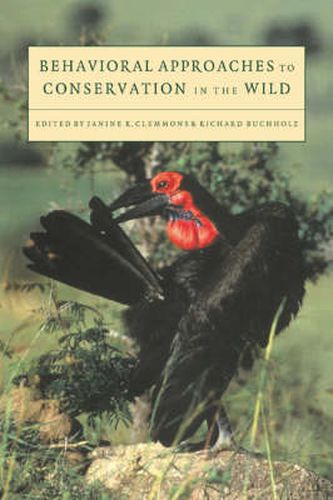Readings Newsletter
Become a Readings Member to make your shopping experience even easier.
Sign in or sign up for free!
You’re not far away from qualifying for FREE standard shipping within Australia
You’ve qualified for FREE standard shipping within Australia
The cart is loading…






Today’s conservation literature emphasises landscape ecology and population genetics without addressing the behavioural links that enable the long term survival of populations. This book presents theoretical and practical arguments for considering behaviour patterns in attempts to conserve biodiversity. Prominent scientists and wildlife managers are brought together in this volume to address a number of issues, including the limits and potentials of behavioural research to conservation, the importance of behavioural variation as a component of biodiversity, and the use of animal behaviour to solve conservation problems and provide specific direction for research and management practices. The book is unique by emphasising conservation of wild populations as opposed to captive and reintroduced populations, where behavioural research has concentrated in the past. The variety of expertise in this volume demonstrates that the complete ethological framework, not just behavioural ecology, provides valuable techniques and knowledge for conserving biodiversity.
$9.00 standard shipping within Australia
FREE standard shipping within Australia for orders over $100.00
Express & International shipping calculated at checkout
Today’s conservation literature emphasises landscape ecology and population genetics without addressing the behavioural links that enable the long term survival of populations. This book presents theoretical and practical arguments for considering behaviour patterns in attempts to conserve biodiversity. Prominent scientists and wildlife managers are brought together in this volume to address a number of issues, including the limits and potentials of behavioural research to conservation, the importance of behavioural variation as a component of biodiversity, and the use of animal behaviour to solve conservation problems and provide specific direction for research and management practices. The book is unique by emphasising conservation of wild populations as opposed to captive and reintroduced populations, where behavioural research has concentrated in the past. The variety of expertise in this volume demonstrates that the complete ethological framework, not just behavioural ecology, provides valuable techniques and knowledge for conserving biodiversity.